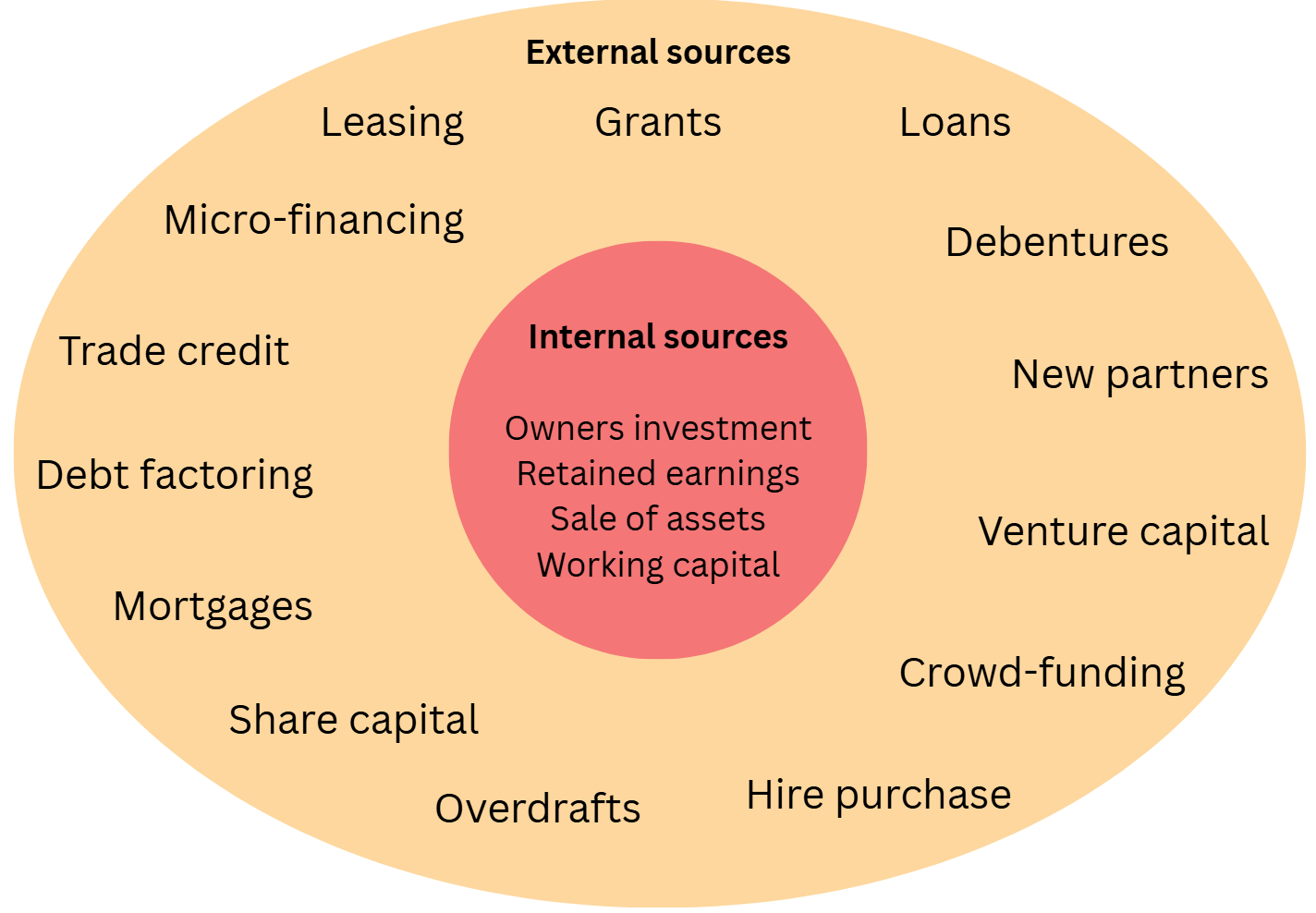Internal Sources of Finance (Cambridge (CIE) A Level Business): Revision Note
Exam code: 9609
An introduction to sources of finance
Businesses have different sources of finance available to them
When the finance comes from inside the business, it is called an internal source of finance
When the finance comes from outside the business, it is called an external source of finance
Internal and external sources of finance

Owner's investment
Owners' investment is a key source of funds when a business starts up
Owners may introduce their savings or another lump sum, e.g. money received following a redundancy
Owners may invest more as the business grows or if there is a specific need, e.g. a short-term cash-flow problem
Evaluating owner's investment
Advantages | Disadvantages |
|---|---|
|
|
Retained earnings
This is profit generated in previous years and not distributed to owners that is reinvested in the business
This is a cheap source of finance, as it does not involve borrowing and associated interest and arrangement fees
The opportunity cost of investing the money back into the business is that shareholders do not receive extra profit for their investments
Evaluating the use of retained earnings
Advantages | Disadvantages |
|---|---|
|
|
Sale of unwanted assets
Selling fixed assets that are no longer required, such as machinery, land or buildings, generates finance
Businesses use this method for a range of reasons
To raise cash quickly without taking on debt
To free up capital tied up in unused or outdated assets
To support short-term cash flow needs or fund new investment
Evaluating raising finance by selling unwanted assets
Advantages | Disadvantages |
|---|---|
|
|
Sale and leaseback of non-current assets
A non-current asset is an interchangeable term with fixed asset
A sale and leaseback arrangement may be made if a business wants to continue to use an asset but needs cash
The business sells an asset, such as a building, for which it receives cash
The business then rents the asset from the new owners or a specialist leasing company
E.g. in early 2023, Sainsbury’s announced that it was in talks to sell some of its prime retail property for £500m, which it would then lease back from the new owners, LXi Reit
Evaluating sale and leaseback of non-current assets
Advantages | Disadvantages |
|---|---|
|
|
Working capital
Working capital is the money a business has available for day-to-day operations, such as paying wages, suppliers, and utility bills
A business can adjust the way it manages working capital to free up cash and improve its short-term financial position without needing to borrow money
Delaying payment to suppliers gives the business more time to hold onto cash
Reducing stock levels means less money is tied up in unsold goods
Speeding up payments from customers brings in cash more quickly
Using existing cash reserves to cover expenses
Evaluating working capital as a source of finance
Advantages | Disadvantages |
|---|---|
|
|
Further notes on managing working capital can be reviewed here
Internal sources of finance and business ownership
The type of business ownership, such as a sole trader, partnership, or limited company, can influence which internal sources of finance are available and suitable
Sole traders and partnerships tend to rely more on owner's investment and working capital because they often have limited retained profit and fewer fixed assets to sell
Case Study
Ali’s Mobile Repairs

Ali’s Mobile Repairs is a small sole trader business based in Nairobi
Ali needs money to buy new tools but doesn’t want to take out a loan
As a sole trader, he decides to use his own savings (owners’ investment) and delays a stock order by a week to free up some working capital
Companies are more likely to use retained profit, sale of fixed assets, or sale and leaseback, as they operate on a larger scale and have more internal resources
Case Study
Ecosap Ltd

Ecosap Ltd is a medium-sized Netherlands-based fruit wholesaler
The private limited company wants to upgrade its cold storage systems
It decides to fund this by using retained profit from the previous year and selling an unused delivery van (sale of fixed assets)

Unlock more, it's free!
Did this page help you?